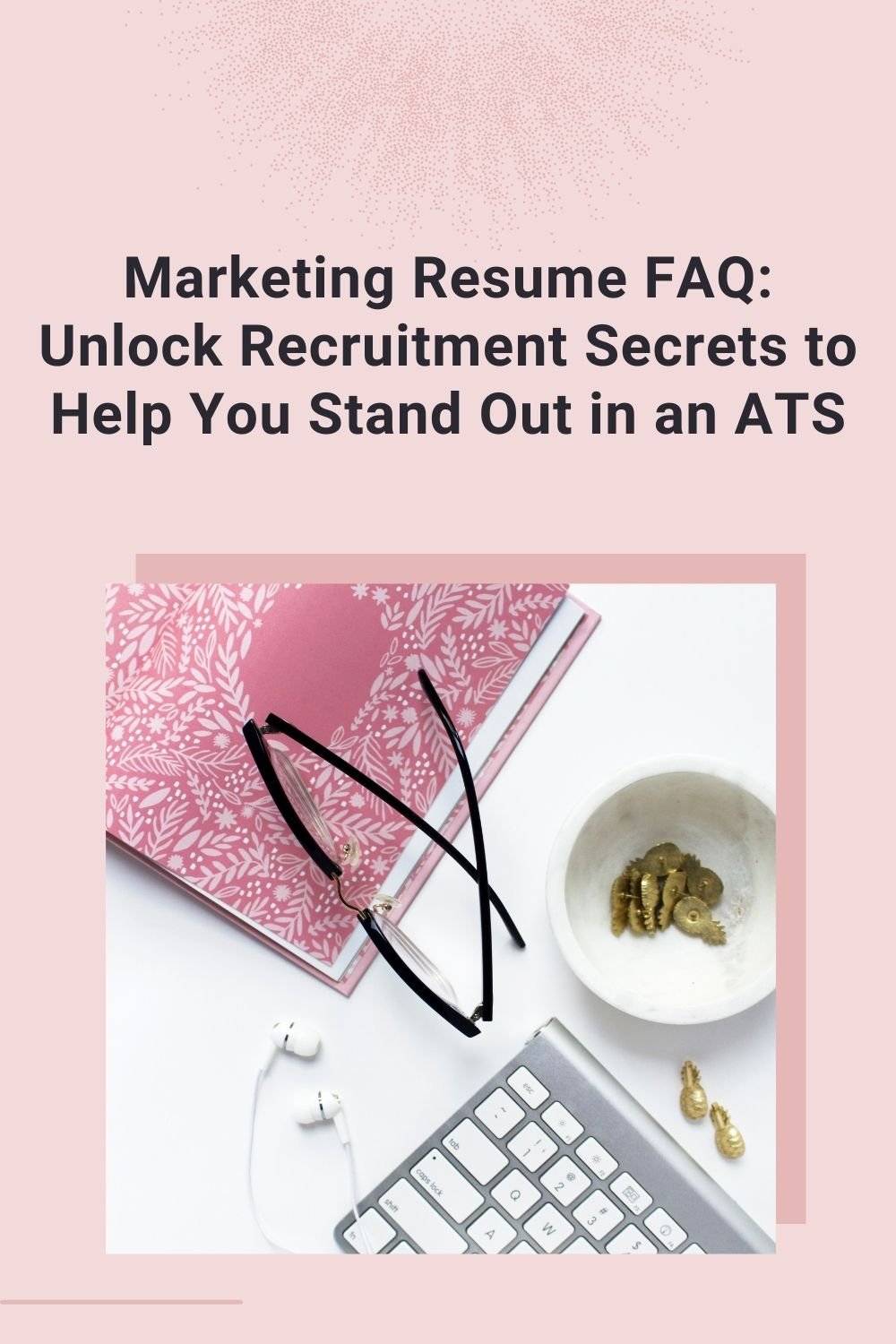Marketing Resume FAQ: Unlock Recruitment Secrets to Help You Stand Out in an ATS
A resume is the most important part of a job application — but many job seekers are unsure how to craft a resume that will stand out to recruiters and land interview opportunities.
As a former recruiter, I’ve read thousands of resumes, and I’m here to help you figure out resume writing by answering the most pressing questions job seekers have about resumes.
I’ll be sharing secrets I learned reviewing resumes as a recruiter at Amazon, Redfin, and The Pokémon Company International so you, too can craft that interview-landing resume.
Q: What information should I include or leave off of my resume?
First, you should include basic information, such as your name, contact information, and city and state of residence. Be sure to include “Open to relocate” if that is the case.
Also, add links to your LinkedIn profile and digital portfolio if you have them. Make sure to verify the functionality of the links before submitting your resume.
You do not need to include your full address or links to personal social media profiles (unless you are applying for a social media position).
Second, you should have a career objective/profile statement and skills section on your resume to list relevant technical and soft skills for the target position.
Third, include your work history with 5-7 bullet points for each position. Be sure to put the company name, location, and dates of employment in your work history section.
Lastly, education — the name of the university, degree earned, and graduation date for education.
If you are a recent grad, you can list your education at the top of your resume. If you are a professional with over 2 years of relevant experience, place your education at the end of your resume.
Leave off information that is not directly relevant to the position you are applying for.
Q: Do I need to include a career objective on my resume?
While you don’t have to include a career objective on your resume, it’s a prime opportunity for you to help recruiters learn about your passion/overall experience and market yourself as the best candidate.
Many recruiters immediately scan the top of your resume looking for a short statement or summary, so including one makes the recruiter’s job easier and helps you stand out.
The statement should be 2-3 lines and provide an overview of your experience and skills as they apply to the role. Adding keywords will help your resume appear higher in ATS search results as well. Here’s an example:
"Product Marketing Manager with 5+ years of experience in developing and launching strategic B2C marketing campaigns in e-commerce fields. Experience owning strategy and execution across consumer product marketing, branding, and social media."
Q: What are resume keywords and why should I use them?
Keywords are specific words and phrases that recruiters and hiring managers scan for in applicants’ resumes.
Recruiters also use keywords to search and filter candidates in the ATS and on LinkedIn.
Using relevant keywords for the position you are applying for will signify to potential employers that you are experienced and familiar with the industry — important qualities that will position you as a good fit for the role!
For a list of marketing-specific keywords to add to your resume, download the Awaken Career keyword resource here. (It’s free!)
Q: How many bullet points should I include under each role, and is there a way they should be formatted?
Ideally, for each role in your work history section, you should have 5-7 bullet points showcasing your responsibilities and achievements while in the role.
Each bullet point should be no longer than 2 lines, and you should include metrics and keywords where relevant to highlight your skills and knowledge.
Additionally, every sentence should start with a power verb, such as “increase,” “manage,” create,” “develop,” etc.
See good examples below:
Developed social media content for the Facebook, Instagram, and Twitter pages that increased audience numbers by 22% across all channels.
Led the marketing strategy and execution for the fashion business towards a revenue goal of $100M.
Improved customer positive experience by 12% and revenue by 27% through video marketing strategy.
Q: Should my resume be written in past tense?
Work experience should be written in past tense, with the exception of roles you are currently in.
For example, for a position you are currently in, you might write, “Develop social media content strategies to increase overall brand awareness by 45%,” but for a position you held in the past, you would write “Developed social media content strategies that resulted in a 45% increase in overall brand awareness.”
Q: What is an ATS, and how do I make an ATS-friendly resume?
ATS stands for “Applicant Tracking System.” Applicant tracking systems are used by recruiters and hiring managers to organize, filter, and search job applications.
To make your resume ATS-friendly, you should include relevant keywords and make sure your resume format is straightforward and readable.
Be wary of using design-heavy resume formats — they can be difficult for both the ATS and recruiters to read.
Check out the article “3 Tips to Make Your Resume ATS and Recruiter Friendly” for more advice on optimizing your resume for recruiters and the ATS.
Still not sure how to create a recruiter- and ATS-friendly resume? Need some tools to help save your time?

